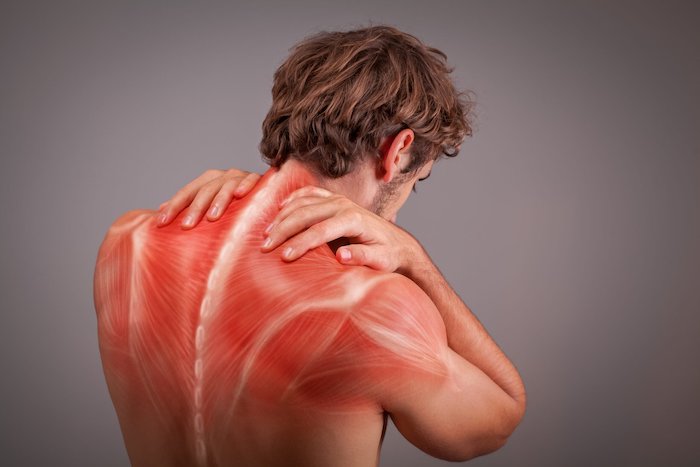
Comprehensive & Effective Treatments
The spine is made up of four areas: the cervical (neck), thoracic (upper back), lumbar (lower back), and sacral region (bottom of the spine). Each area of the spine is connected to and surrounded by joints, muscles, tendons, ligaments, and nerves. All of these structures combined make up the back. When exposed to injury, trauma, or a chronic condition, any of these structures can cause pain that can radiate into multiple areas of the back. The pain management physician provides both diagnostic testing and treatment for back pain that is caused by several different reasons. When one structure in the back becomes injured or inflamed, it can radiate pain into other areas, which can cause significant discomfort and limited mobility.
Whether you are experiencing acute or chronic pain around your neck or anywhere along your back, The pain management physician and medical expert staff are dedicated to helping you diagnose the cause or source of your pain with alleviation. With neck and back pain being a common reason for doctor visits across the nation, our facility makes sure of updating our staff with the latest methods, techniques, and services to ensure that you are receiving the highest quality of care.
Causes of Back Pain
Numerous causes of back pain can range from injury to neurological disorders. Some of the most common that occur include:
- Overused/overexerted muscles or joints
- Injury to the discs that cushion the spine
- Arthritis
- Osteoporosis
- Sciatica
- Skeletal irregularities
- Disorders that affect sacroiliac joints
- Nerve damage or disorders
Neck & Upper Back Pain Management
Neck pain and discomfort in the upper back can be caused by several reasons, such as whiplash injury, segmental dysfunction, improper posture, problems relating to spinal discs, and stress-induced factors. Problems emerging from the neck and upper back regions include restriction of cervical motions, migraine-like headaches, temporomandibular joint dysfunctions (TMJ disorders), spasms around the shoulder/upper back area, ear ringing, inflammation of the middle ear (otitis media), and overall chronic stiffness and tension in the region.
Some of the care includes:
- Cervical and upper spinal adjustment to properly position the vertebrae in the correct placement and to ensure regular mobility and functionality
- Trigger point therapy for a personalized and specific type of massage therapy that helps loosen tense areas of the neck and upper back.
- Exercise rehabilitation routine to help strengthen and reposition the cervical and spinal joints and vertebrae.
Middle Back (Thoracic) Pain
The thoracic region of your spine is that area between the base of your neck and rib cage and consists of 12 spinal discs, parts of your spinal vertebrae, nerves, blood vessels, ligaments, and tendons. Although not as common as upper or lower back pain due to its increased stability and decreased movement patterns when compared to the other two regions, pain in this region should still be regarded with the same seriousness and attentiveness as upper and lower back pain.
Some of the many possible causes of middle back pain can include:
- Age-related reasons such as spinal fluid reduction, loss of muscle mass, or thinning of bone structures
- Fractures from sports injuries or car accidents
- Osteoporosis, obesity, spinal stenosis, and scoliosis
- Muscle sprains or strains that have caused ligaments to tear or outstretch
- Herniated or slipped disc in the thoracic region
- Lifestyle factors including poor posture and poor exercise habits
- Stress-induced side effects from mental health conditions such as depression or anxiety
Pain management treatments, along with incorporating physical medications, may help speed up the rehabilitation and recovery process.
Lower Back Pain Causes & Treatments
The lower back structure consists of five vertebrae within the lumbar region that support a majority, if not most, of your upper body weight. Shock-absorbing intervertebral discs cushion the bones along the spinal cord, while ligaments help bond the vertebrae in position and tendons affix the muscular tissue together with the spinal column. Along with these supporting soft tissues, pairs of nerve roots transmit body movement and other signals to the cerebral region.
Early lower back pain treatments can typically be relieved or temporarily alleviated using medications such as analgesics, anti-inflammatory medications, and opioid drugs under careful supervision, along with self-management care treatments like hot and cold packs and core-strengthening exercises for your back muscles.
Precision Pain Care and Rehabilitation has two convenient locations in Richmond Hill – Queens and New Hyde Park – Long Island. Call the Queens office at (718) 215-1888, or (516) 419-4480 for the Long Island office, to arrange an appointment with our Interventional Pain Management Specialist, Dr. Jeffrey Chacko.













